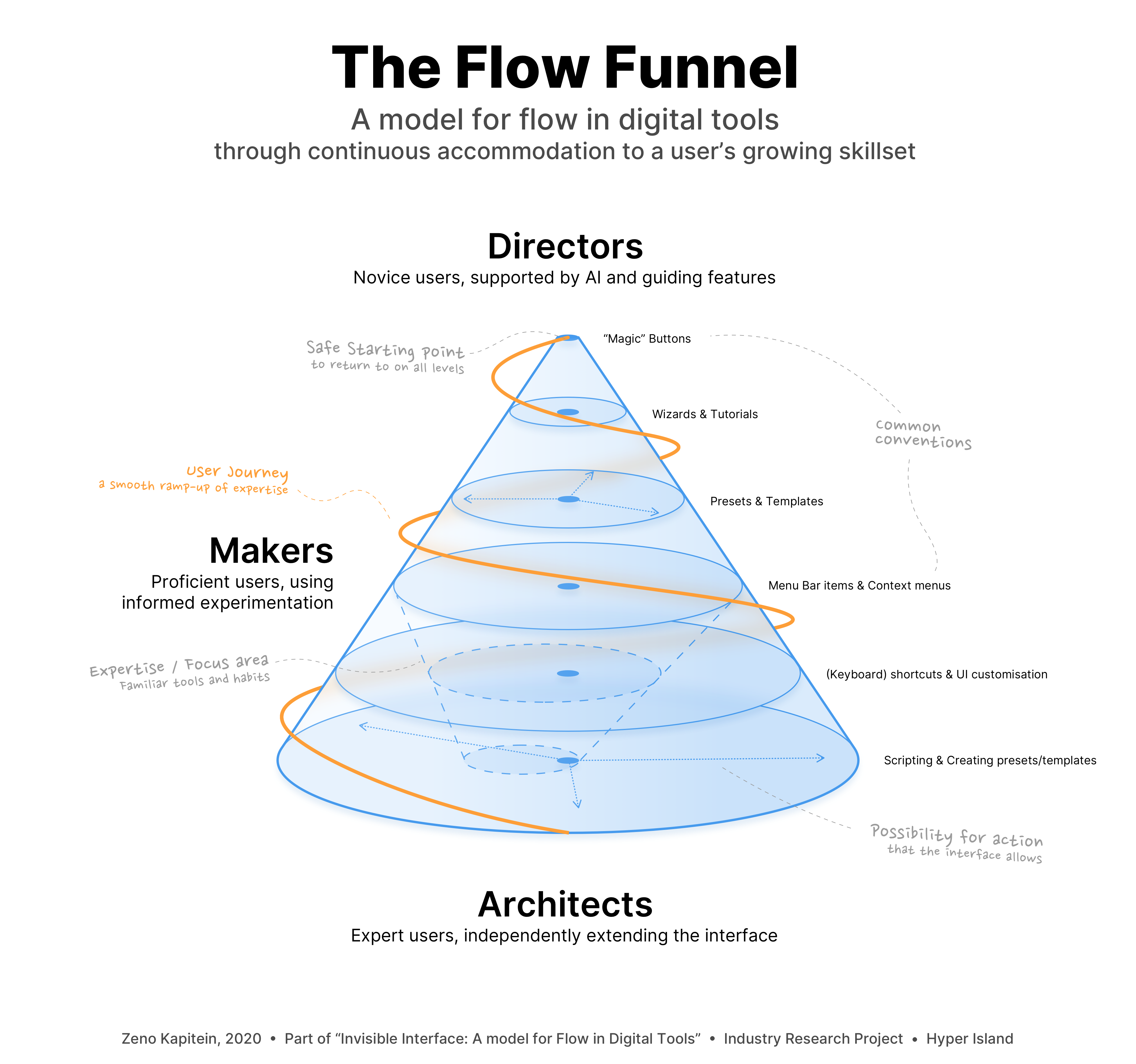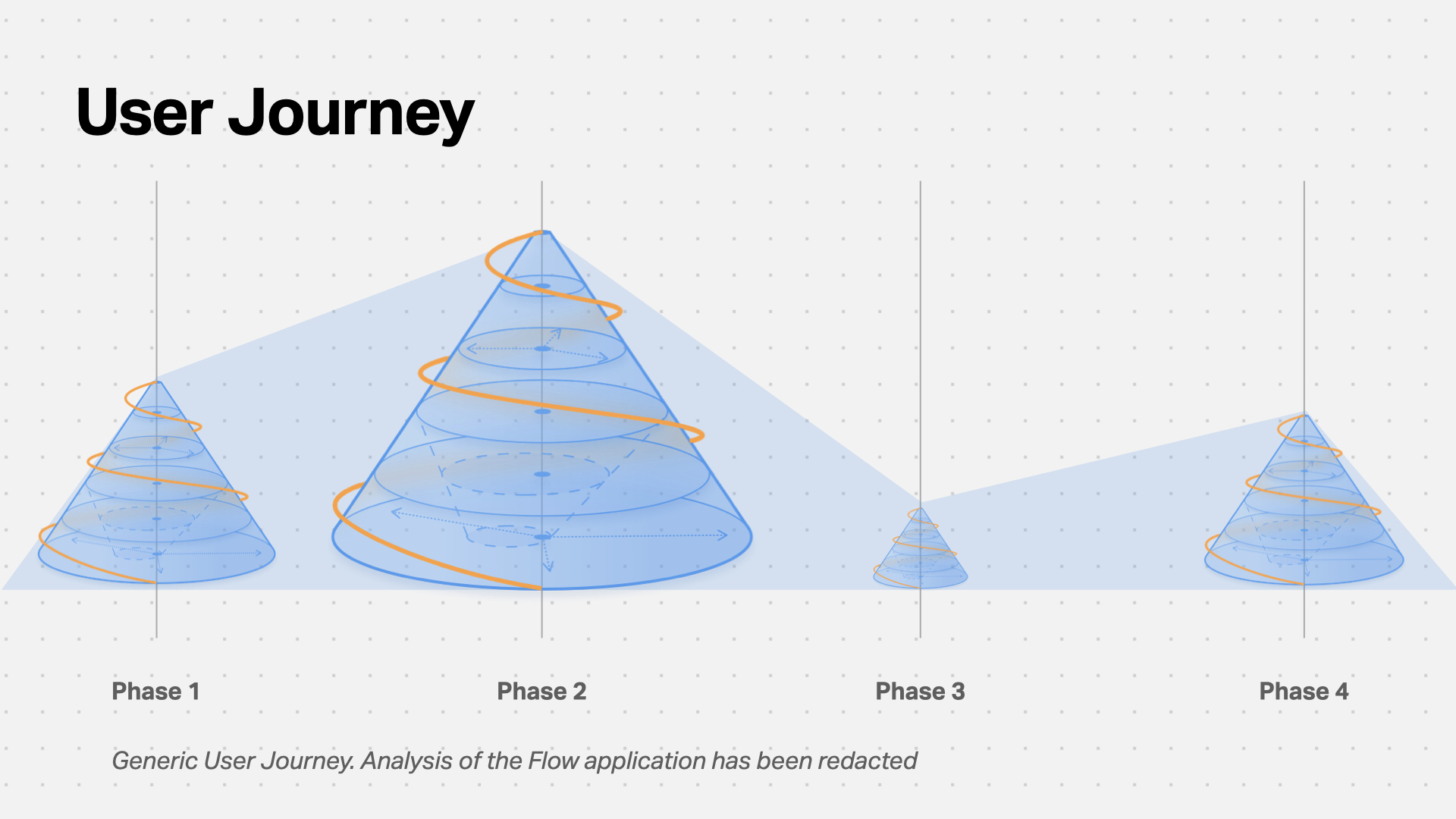Chapter 2Executive Summary
This thesis followed a loosely structured process split into three main phases:
- A theoretical literature review
- The conception and validation of a new model based on literature
- A case study meant to research how well the model could be applied in a "real life" setting
Literature Review
Flow describes the phenomenon where one becomes fully entrenched in whatever activity they enjoy doing: they lose track of time and sense of self, feel in control and are highly motivated (Csikszentmihalyi, 2004). Flow occurs when your skills (your capacity for action) and the challenges (opportunities for action) are in perfect balance. Too much relative challenge results in anxiety, too little results in relaxation. As you partake in the activity, your skills will grow and the challenge will need to be matched, otherwise flow will cease.
While tools have long existed as physical instruments to help us perform tasks (Lilley, 1948), the advent of the computer has made digital tools just as important in our lives. Digital tools have developed a multitude of interaction paradigms, and these are in constant flux.
The lack of concrete implementations of flow and valence of market trends has led to flow theory being under-utilised in the design process of digital tools. There is a clear need for a mental model of flow in digital tools, to aid designers in creating flow-inducing interfaces.
Model Development

The Flow Funnel is a model aimed at helping designers understand how users of various skill levels will interact with their interface, and how to make flow occur. Its take-away: a flow-inducing interface should scale its complexity up to match the user's skill level.
The Flow Funnel distinguishes between three user styles: Directors – Makers – Architects. Each one has different priorities and interaction paradigms that suit them. The interface's various systems should interlock to form a smooth ramp-up of complexity.
Case Study

As a final step the Flow Funnel was applied as a tool within a design process. I partnered with The Engineering Company to help develop their engineering development platform Flow. During this process, the Flow Funnel helped focus ideation and validate design directions by concretely showing which parts of the user journey did not allow for a skills/challenge balance for all user styles.
Conclusions and Next Steps
The exact pathways through which an interface causes flow are still unclear, as flow is an elusive phenomenon that is by definition subjective and fleeting. Further research could be done into measuring concrete interface characteristics and their effect on perceived challenge. Measurements of flow itself remains a bottleneck as well. A lot can be learned from fields such as game design.
A flow-inducing digital tool should facilitate the user in reaching flow state by matching their skill level with an appropriate amount of possibilities for action. The Flow Funnel captures this notion in a model to help designers incorporate flow into their design process. The Funnel also leaves questions unanswered, particularly around implementation. This is still up to each individual designer's intuition, and could be greatly expanded upon with more pointers and research.
The usefulness of the model will have to be proven through practice. But on the path towards a comprehensive understanding of flow in digital tools, it is intended as a first step.